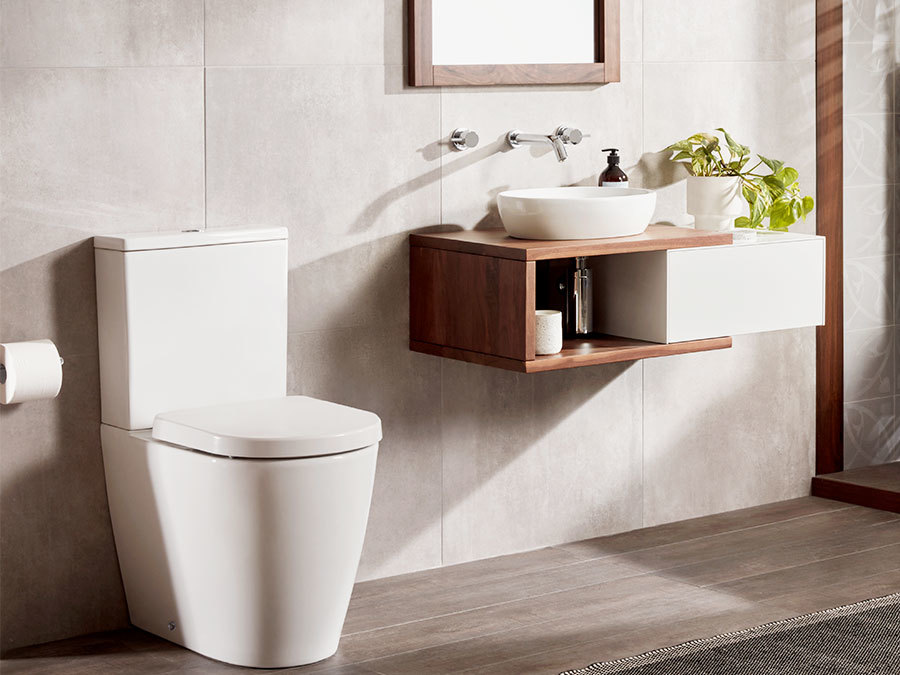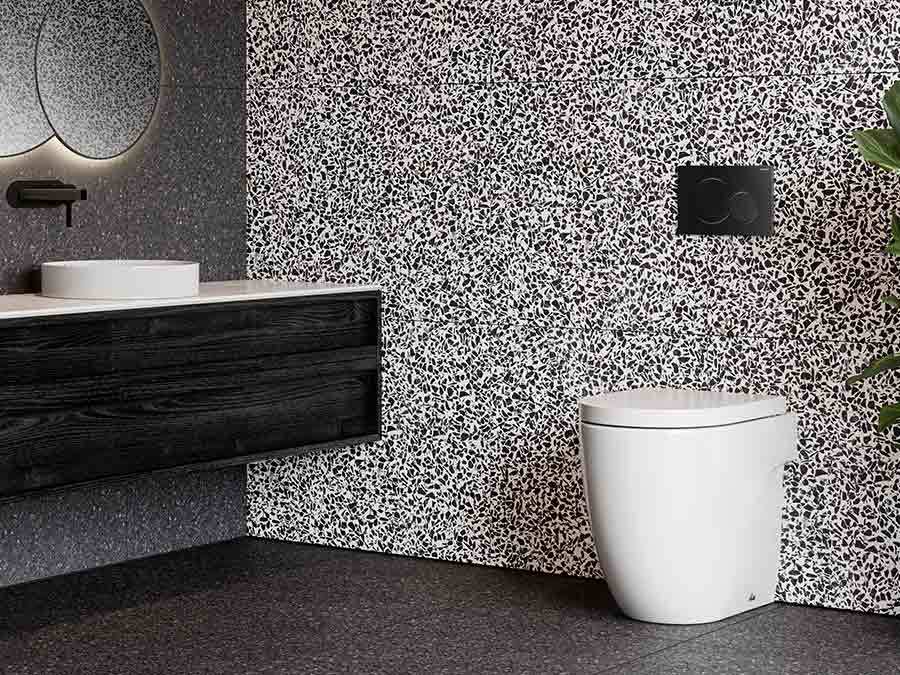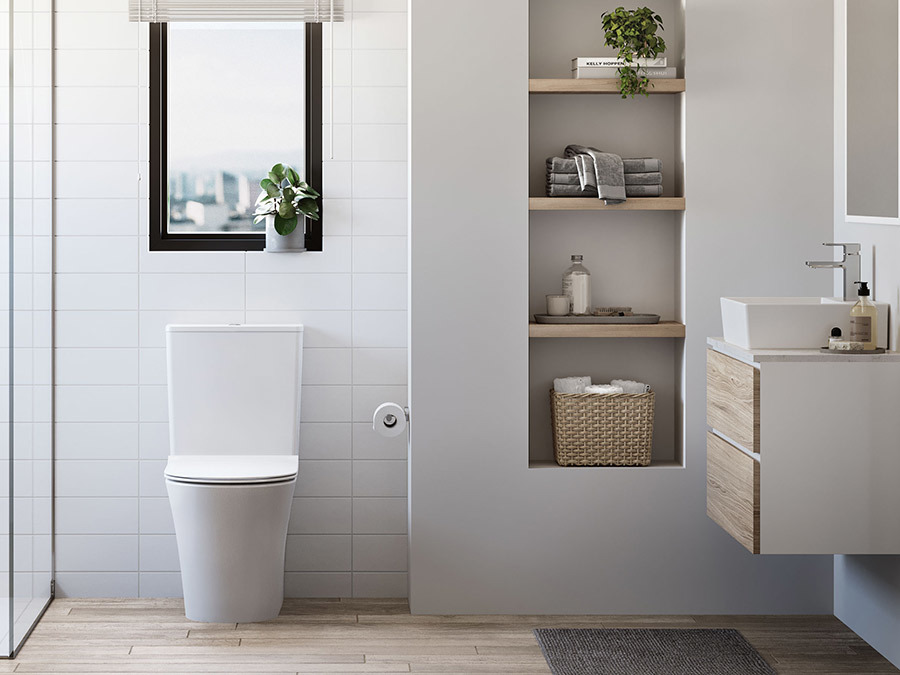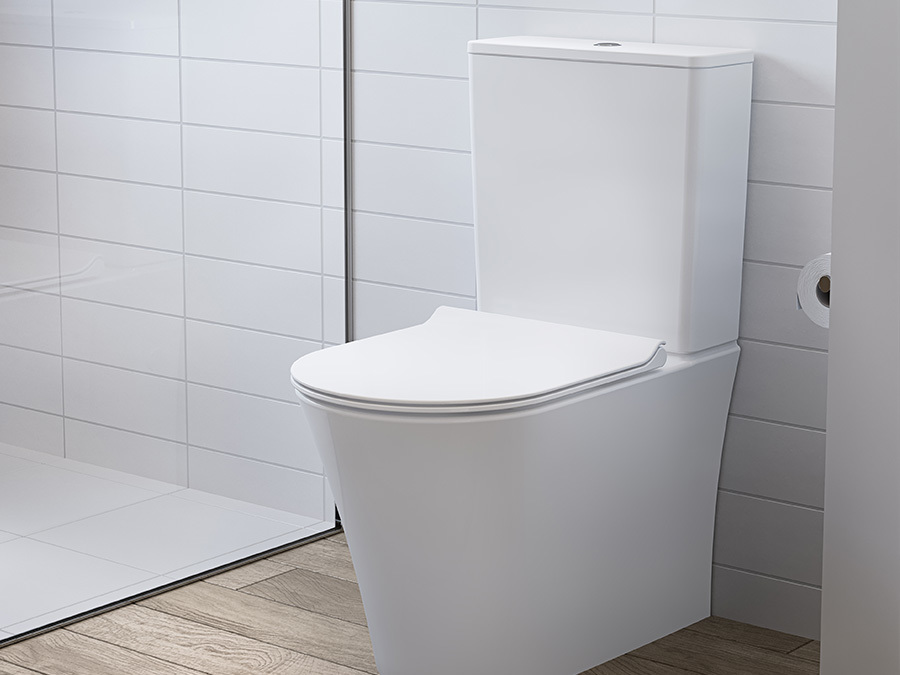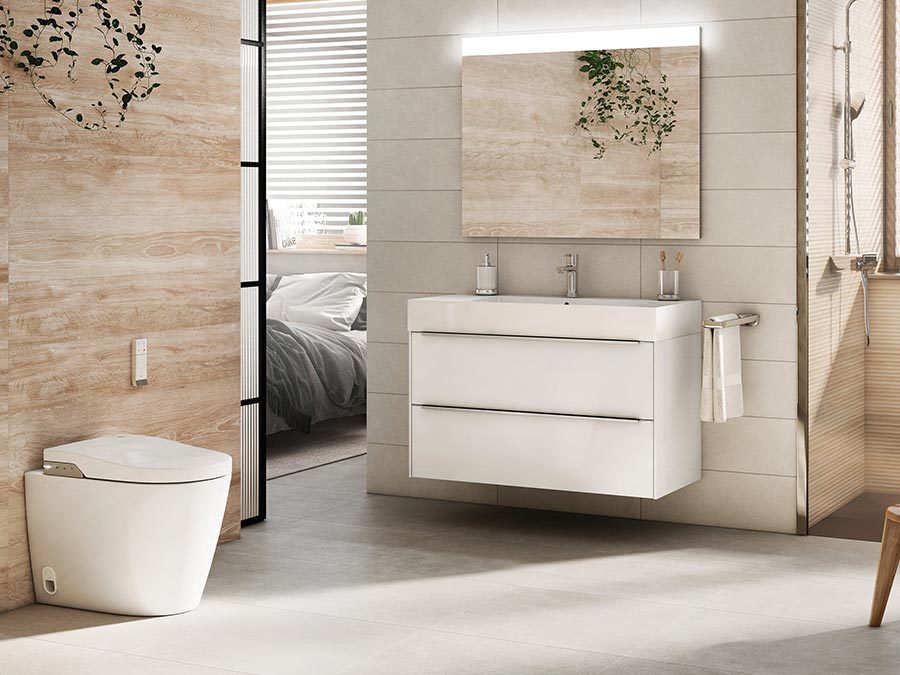Understanding Toilets: Terminology to Make Your Renovation Quicker and Easier
Give as much information to your tradie before they visit your home with these common toilet phrases. That’s right - toilet talk, to help you choose a toilet and understand your trades.
While any great tradie will be happy to explain the various plumbing terms and toilet options, here’s a guide to help you get a step ahead and choose the right toilet for you and your bathroom.
Toilet Terminology
One of the main components of a toilet is the cistern, which is the component that holds the water used to flush a toilet. When you flush the toilet, the water is released into the bowl to flush away the waste, then the cistern is refilled by the water inlet (see below) for next use.
Here are four options for toilet cisterns, with examples:
1. Close coupled
A close coupled toilet is fairly common, with the cistern mounted to the top of the toilet bowl/pan as one complete unit. The flush button is on the top of the cistern and there are no visible pipes connecting the cistern to the pan. This Posh Solus Toilet Suite is a great example of a close coupled toilet suite.
2. Back to wall
A popular selection, back to wall toilets sit flush against the wall, with no gap between the back of the pan and the wall. The benefit of a back to wall toilet is that it’s easy to keep clean because no dust or grime can build up behind the pan. Back to wall toilets can come in a close coupled option, or for a more streamlined look, a pan only option with an inwall cistern. The Kado Lux Back to Wall Toilet Suite is a popular close coupled back to wall suite with a timeless and elegant design. It’s also available in a matching pan only option in the Kado Lux Back to Wall Pan.
3. Wall-hung
Wall-hung toilets are similar to back to wall pans. The difference is that they are elevated off the floor which gives the illusion of extra space, ideal for a small bathroom or powder room. A great example of a wall-hung pan the bold, yet compact Kartell by LAUFEN Wall Hung Pan.
4. In wall/hidden cistern
An inwall/hidden cistern sits in the wall and out of sight with a button plate on the front to both activate the flush and access the cistern for maintenance. In wall cisterns like the Hideaway+ Inwall Cistern Frame are sleekly designed and save on space, removing the need for a large component of the toilet. The button plate that completes this set-up has now become a feature in its own right, too, and you can find one in almost every finish and style to suit your unique bathroom. Check out the Geberit Sigma Flush Plate in Black to bring hotel luxury into your bathroom.
How It Works
If renovating, your bathroom may have some pre-existing structural elements that may impact your options when you’re choosing a new toilet, so it’s important to know what you are working with. If you’re not sure, your plumber can help with this.
P-trap or S-trap?
The trap is the component of the toilet that disposes of waste and prevents unwanted smells from re-entering the bathroom. A P-trap disposes of waste through the wall and an S-trap disposes of waste through the floor. If you’re replacing your toilet, be sure to take note of whether the toilet has a P-trap or an S-trap, as some toilets are designed for only one configuration.
Toilet set-out
The toilet set-out is the distance between the centre of the waste pipe and the finished wall (for an S-trap) or floor (for a P-trap). Set-out measurements can vary depending on the current toilet installed, so when looking for a new toilet, be sure to check that its set-out will match your existing plumbing if renovating.
Inlet
A water Inlet brings the water supply into the cistern through a tap/valve on the wall and most commonly a flexible metal hose connected to the cistern. For a close-coupled toilet, this water inlet can be classed as a back/top inlet or bottom inlet. A back/top inlet is located inside the cistern out of sight and a bottom inlet is positioned beside the toilet pan with the valve and hose in view.
If you’re replacing a toilet, be sure to check the water inlet position and trap set-out of your chosen toilet to make sure they’re a match. Many older toilets have a bottom inlet, so if you’re looking at a new toilet with a back inlet, you'll need find out if it’s possible to move some of the plumbing.
Added Toilet Features
Whether it’s for extra hygiene or added convenience, there’s more to a toilet that can increase comfort and practicality in your selection.
Rimless Technology
Rimless technology has fast become the standard in Australian toilets. A toilet with a rimless pan provides water distribution from outlets at the rear of the pan rather than from under the traditional rim. The removal of the rim allows for a more hygienic experience with less space for germs to hide and an easier clean in the long term. The flow is also more efficient, providing a clean flush to eliminate waste.
Smart Toilets
Taking the lead in bathroom technology is the smart toilet. Smart toilets like the Roca In-Wash® Inspira Smart Toilet provide the functionality of a regular toilet with added washing and drying features. Available in a close coupled toilet suite, back to wall pan and wall-hung pan, the toilet provides temperature and pressure adjustment to suit your preference and reduces the need for toilet paper.
Our Product Picks
For a close coupled toilet, check out the Posh Solus Toilet Suite.
If you like the look of back to wall toilets, see Kado’s Lux Back to Wall Toilet Suite and inwall cistern option Lux Back to Wall Pan.
The sleek Kartell by LAUFEN Wall Hung Pan is ideal for a smaller space.
For rimless technology, the Roca The Gap toilet is a great option.
Remember, nothing beats expert advice and your plumber is a great source of knowledge and expertise when choosing the best toilet for your space. All of the plumbing work needed to complete your bathroom renovation must be undertaken by a licensed plumber.
